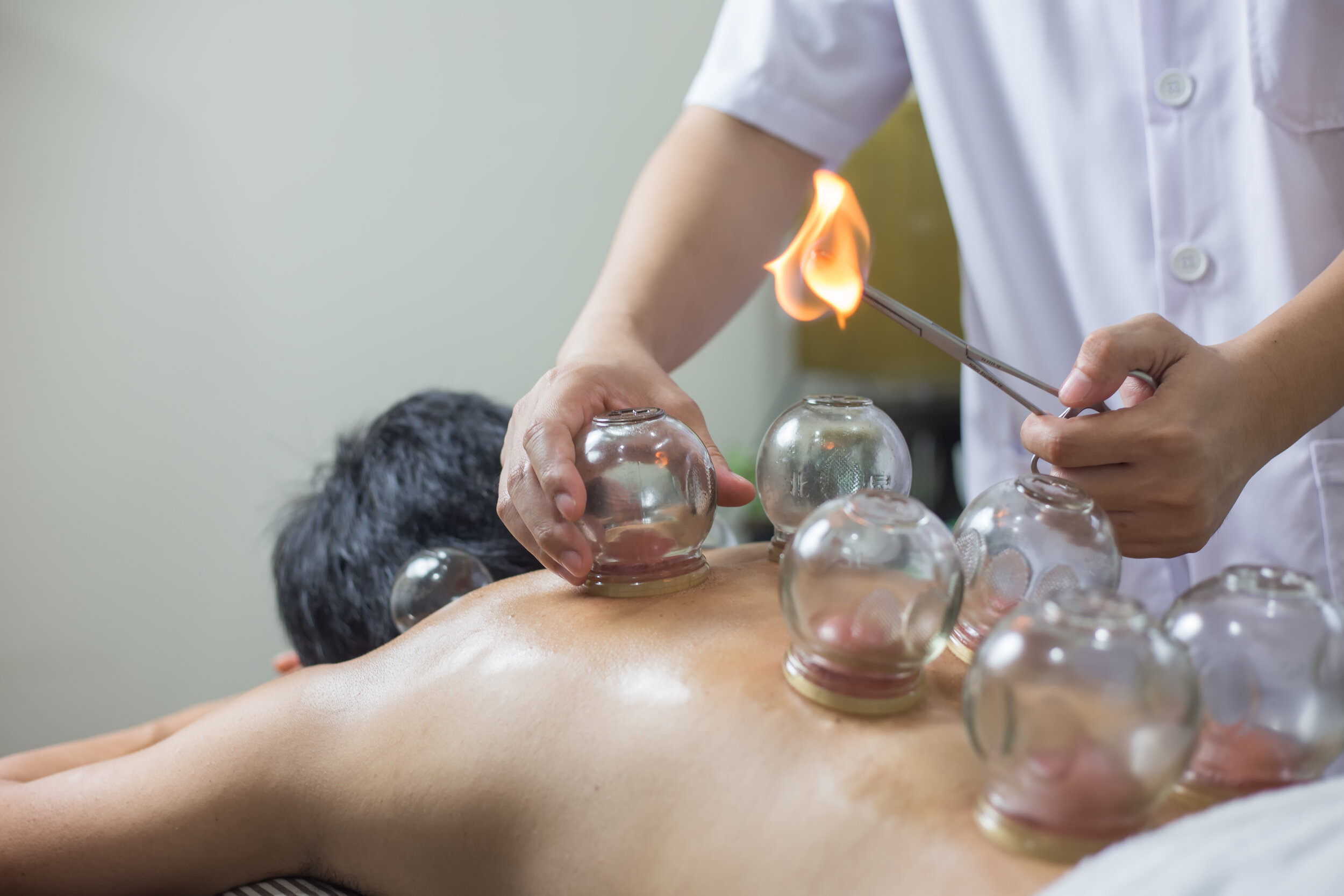
Cupping
Cupping is the term applied to a technique that uses small glass cups as suction devices that are placed on the skin to disperse and break up stagnation and blockages by drawing congested blood, energy or other humors to the surface.
“When the flow is not open, there is pain.
When the flow is open, there is no pain.”
This is the treatment principle behind cupping. The goal is to remove stagnation and open the flow of the channels. Once the stagnation is removed, the pain disappears.
Cupping can only be used for certain disorders. Due to the nature of the treatment, it can only pull toxins out from the skin and muscle layer. It will not have a large impact on conditions where the pathogen is stuck in deeper layers of the body.
These red marks are not bruises, they are a result of toxins being removed through the skin due to cupping. The darker the marks, the more toxins were removed. They usually last for a few days up to 2 weeks.
FAQ’S
What is cupping used for?
Cupping is excellent for removing stagnation and toxins that are trapped in the muscle and skin layer. This can be due to excessive physical exercise or conversely, lack of exercise such as sitting at a desk for hours every day. Painful and achy joints are often treated with cupping.
The common cold where symptoms manifest as body aches, stiff neck, and/or cough can also be treated with cupping.
When should you not use cupping?
Cupping is contraindicated when the symptoms manifest deeper in the body, such as digestive disorders, blood disorders, insomnia, etc. Also, when the patient is very weak and lethargic, cupping may make the situation worse.
It is not suggested to cup too many days in a row as it technically has a slight draining effect. At most, once every other day is acceptable.

